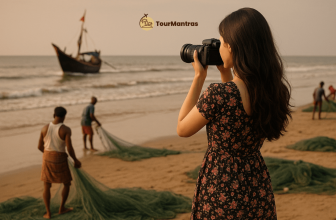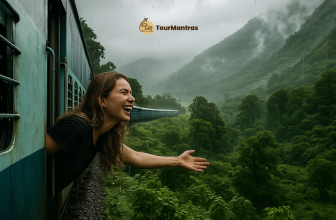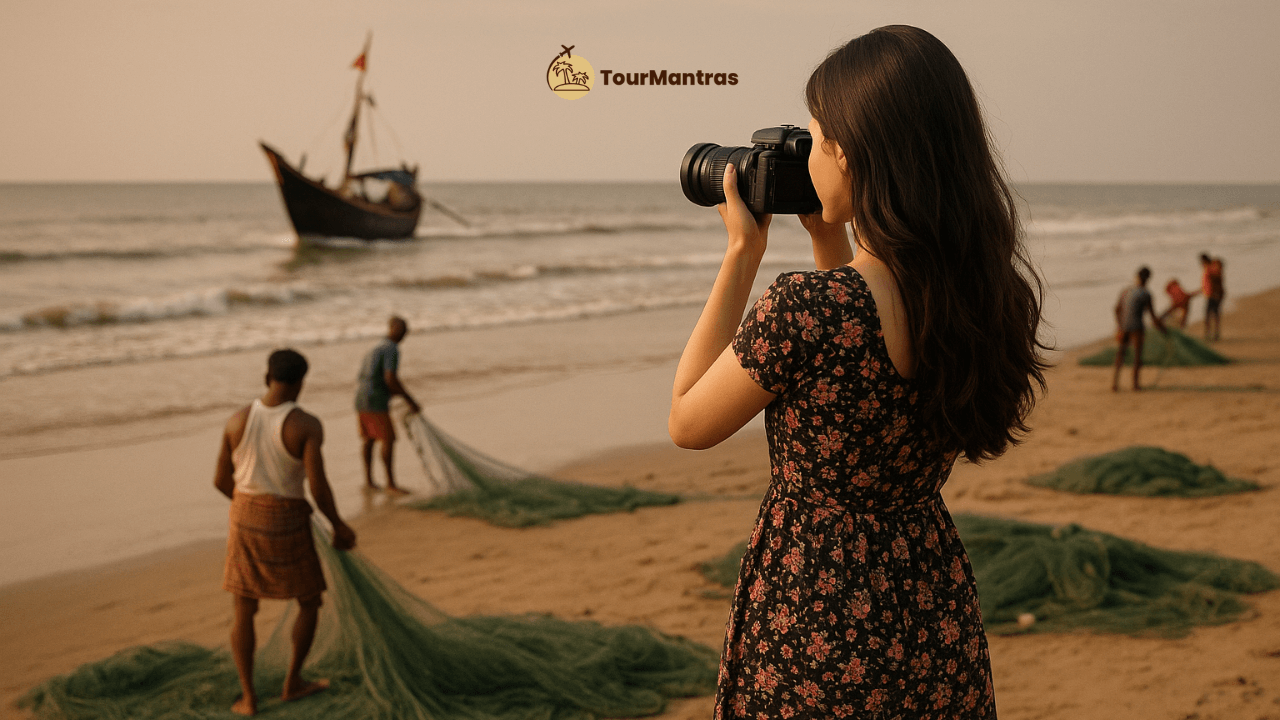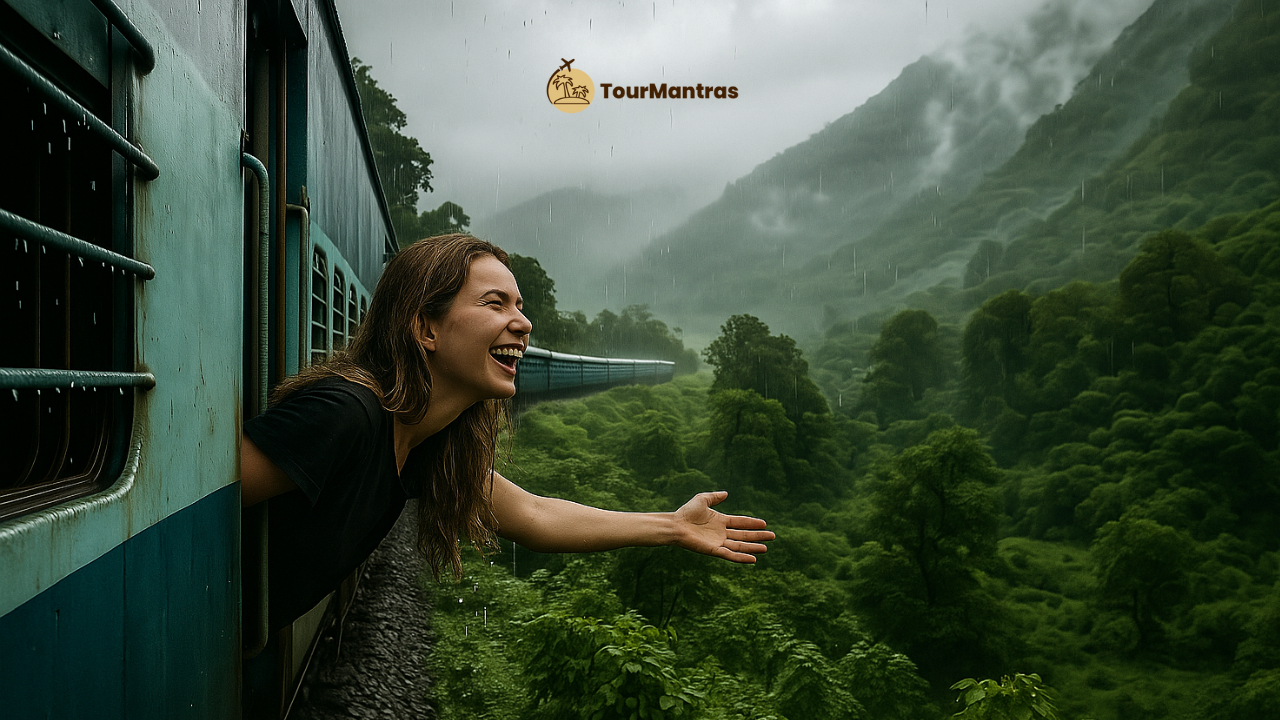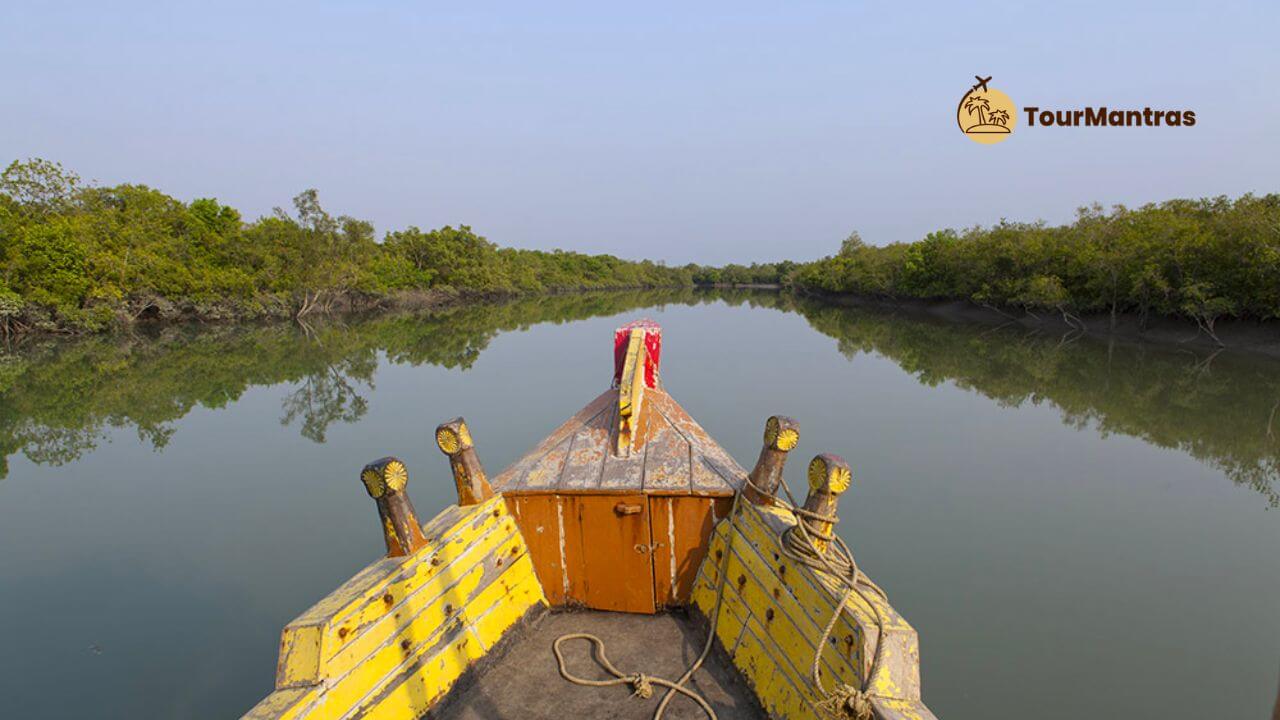
The Sundarbans is a captivating mangrove region nestled in the southwestern part of Bangladesh and the eastern edge of India in West Bengal. As a natural wonder, a Sundarban trip becomes a must-visit place for every travel enthusiast’s bucket list.
Sundarban mangrove is designated as a UNESCO World Heritage Site. As a tourist place in West Bengal, it is not just a deltaic expanse but also a sanctuary for a diverse range of flora and fauna, including the enigmatic Bengal tiger. In this blog, we will share important information about the Sundarban trip. So, stay tuned till the end.
Table of Contents
Sundarban Trip: What to See in the Sundarbans
Sundarban mangroves are one of the best places to visit in West Bengal. During your Sundarban Trips, the following things you can do and see:
1) Bengal Tigers: The Sundarbans are home to the largest population of Bengal tigers, and a visit here offers a rare opportunity to catch a glimpse of these majestic creatures in their natural habitat. The best times for tiger sightings are early mornings and late afternoons when they are most active.
2) Sundarban Mangrove Forests: This sprawling delta is renowned for hosting the world’s largest mangrove forest. The intricate network of mangrove trees with their aerial roots creates an ethereal landscape that is best explored by a boat tour through the winding waterways.
3) Sundarban’s Diverse Wildlife: Beyond the Bengal tiger, the Sundarbans boast a wealth of wildlife. Keep your eyes peeled for saltwater crocodiles, spotted deer, wild boar, monkeys and a variety of bird species. Birdwatchers will be enthralled by the chance to spot over 300 avian species, including the endangered masked finfoot.
4) Sundarbans Wildlife Safari: For a deeper foray into the heart of the Sundarbans, consider embarking on a wildlife safari. These safaris are typically conducted in small boats, accompanied by vastly experienced & govt. certified guides who enhance your chances of encountering the region’s wildlife.
5) Sajnekhali Wildlife Sanctuary: A visit to the Sajnekhali Wildlife Sanctuary is a must. It houses an interpretation centre that provides valuable insights into the flora and fauna of the region. The watchtower at the sanctuary offers panoramic views of the surrounding forests.
6) Dobanki: Another noteworthy destination, Dobanki features a captivating canopy walkway that grants you a unique perspective of the mangroves and their inhabitants. As you traverse the elevated walkway through the treetops, you’ll be treated to stunning vistas.
7) Bonbibi Temple: The Bonbibi Temple stands as a cultural gem within the Sundarbans. It is dedicated to the goddess of the forest and serves as a place of reverence for locals and visitors alike. The temple’s architecture is a testament to the profound connection between the indigenous communities and the natural world.
Sundarban Core Area Attractions
1) Netidhopani: This area is steeped in myth and legend and is known for its serene and mystical atmosphere. Key attractions include the Netidhopani Watchtower and the Legend of Banbibi. From the Netidhopani Watchtower, you can enjoy breathtaking views of the Sundarbans. It’s also a place of historical significance, with ancient temples nearby. Netidhopani is also associated with the legend of Banbibi, the goddess of the forest. Visitors often pay their respects at the temple dedicated to her.
2) Kumirmari: Located on the Sagar Island within the Sundarbans Core Area, Kumirmari is known for its pristine natural beauty. Things to see and do here include Mudflats and estuaries. Explore the mudflats and estuaries, which are essential habitats for various wildlife species, including crabs and fish. Kumirmari is a crucial nesting site for Olive Ridley turtles. If you visit during the nesting season, you might witness the incredible sight of turtle hatchlings making their way to the sea.
3) Harikhali: Harikhali is one of the many picturesque villages located within the Sundarbans region, which spans across both Bangladesh and India. It is situated in the Indian part of the Sundarbans, in the state of West Bengal. Major attractions are deer, fishing cats, monitor lizards, saltwater crocodiles etc.
4) Bonnie Camp: This tourist spot in your Sundarban trip is situated on Kalash Island, which is part of the Sundarban’s core area. Kalash Island is located on the banks of the Bay of Bengal and boasts of the Kalash beach. Deer, crocodiles, and tigers are a regular sighting. But to visit this camp, one will need the required permit and must have a guide to assist during the trip due to the threat of the tigers.
Best Time to Travel to the Sundarban Mangrove
Selecting the right time for your Sundarban trip is critical in ensuring an unforgettable experience. The climate and conditions here exhibit significant variation throughout the year.
1) Winter (November to February):
a) Weather: Winters offer mild and pleasant weather conditions, making it the prime season for exploration.
b) Wildlife: Wildlife sightings are more frequent during these months due to the comfortable temperatures.
c) Boat Tours: The calm waters during this season ensure a comfortable and enjoyable boat tour experience.
2) Summer (March to June):
a) Weather: Summers in the Sundarbans can be scorching, with high temperatures and humidity.
b) Wildlife: Wildlife sightings might be less common as animals tend to seek shelter from the intense heat.
c) Off-Peak Season: This period is considered off-peak, which means fewer tourists and potentially lower costs.
3) Monsoon (July to September):
a) Weather: Monsoons bring heavy rainfall and cyclones, making travel inadvisable during this season.
b) Wildlife: Flooding in many areas of the Sundarbans renders them inaccessible, limiting wildlife sightings.
c) Not Recommended: Due to safety concerns and the reduced visibility of wildlife, monsoon is generally not recommended for tourists.
4) Post-Monsoon (October):
a) Weather: October starts the post-monsoon season when weather conditions begin to improve.
b) Wildlife: Wildlife sightings gradually increase, serving as a transitional period leading to the peak season.
Local Cuisine in the Sundarbans
A Sundarban trip is not just about wildlife sightings, you will surely enjoy the mouth-watering delicacies during the trip. The hotels or restaurants offer tasty Bengali cuisine. If you buy a Sundarban tour package, the trip planner will arrange for good and healthy food for you. Here are some delectable dishes you should try:
1) Mach Bhaja: Delight in crispy fried fish, a Sundarbans staple. Freshly caught fish from the rivers and estuaries are marinated in spices and deep-fried to perfection.
2) Prawn Malai Curry: The Sundarbans are renowned for their succulent prawns, and prawn malai curry is a must-try dish. It features prawns cooked in a creamy coconut milk base infused with aromatic spices.
3) Daab Chingri: Immerse your taste buds in the unique flavours of daab chingri, where prawns are cooked within tender coconut shells, imparting them with a delicate coconut essence.
4) Rui Macher Jhol: A spicy fish curry, rui macher jhol, is a local favourite. It showcases a medley of indigenous spices and is often served with steamed rice.
5) Sundarbans Honey: Don’t miss the opportunity to sample wild honey harvested by local communities. It offers a sweet treat with a distinctive flavour.
Charges Per Head While Travelling to Sundarban
The cost of your trip to Sundarbans can vary depending on several factors, number of travellers, choice of tour package, duration of your stay, and mode of transportation. Below are rough estimates of expenses, presented in both Indian Rupees (INR) and US Dollars (USD) for reference:
1) Boat Tour: A two to three-day boat tour can range from INR 7,000 to INR 18,000 (approximately USD 100 to 250) per person, including accommodation and meals. Luxury packages with air-conditioned cabins may cost more.
2) Entrance Fees: There are nominal entrance fees for the national parks and wildlife sanctuaries in the Sundarbans, typically ranging from INR 350 to INR 1,400 (approximately USD 5 to 20) per person.
3) Guide Fees: Engaging a local guide is advisable for a more enriching and secure experience. Guides usually charge around INR 700 to INR 1,400 (approximately USD 10 to USD 20) per day. However, if you are availing of a tour package, guide fees are included.
4) Food and Accommodation: If your tour package does not include meals, budget approximately INR 1,000 to INR 2,000 (approximately USD 15 to USD 30) per day for food. Basic accommodations in guesthouses or eco-lodges may range from INR 1,400 to INR 3,500 (approximately USD 20 to 50) per night.
5) Transportation: The cost of reaching the Sundarbans varies depending on your departure point. Travelling by train or bus from major cities like Kolkata or Dhaka may cost anywhere from INR 1,400 to INR 3,500 (approximately USD 20 to 50) one way.
However, travelling, lodging, food, and sightseeing are included in Sundarban trip packages. A Sundarban Trip package costs INR 4,000 to 8,000 (USD 48.13 to USD 96.26) per head. For core area trips and private trips, it can cost slightly more.
Please keep in mind that these are approximate figures and actual prices may fluctuate depending on tour operators and personal preferences.
Wrapping Up
The Sundarban trip, with its unique blend of natural beauty and biodiversity, should be on your bucket list. Whether you seek to witness Bengal tigers in the wild, explore Sundarban mangrove forests, or indulge in local cuisine, the Sundarbans offer a memorable journey. To make the most of your visit, carefully choose your travel timing, savour the regional delicacies, and be prepared for the associated costs. The Sundarban mangrove isn’t just a place to visit; it’s a voyage into the heart of nature’s mysteries.
Frequently Asked Questions on Sundarban Trip
Safety is a common concern for visitors. While the Sundarban mangrove forest is a beautiful natural destination, it’s also home to wildlife, including Bengal tigers. To ensure safety, it’s advisable to visit with experienced guides and follow all safety guidelines provided by tour operators and forest authorities.
Many travellers want to know the ideal time for their Sundarban trip. The best time to visit is during the winter months, from November to February, when the weather is pleasant, and wildlife sightings are more frequent. Summers can be hot and humid, while the monsoon season (July to September) is not recommended due to heavy rainfall and flooding.
The Sundarbans are famous for Bengal tigers, but you can also see saltwater crocodiles, spotted deer, various bird species, and even Ganges River dolphins in the estuaries.
You can book Sundarbans tours through reputable tour operators who provide guided boat trips and necessary permits. It’s essential to plan in advance, especially during the peak tourist season.
Understanding the necessary permits is crucial. You need permits from the forest department, and entry to specific areas, like the core zones, may be restricted. Your tour operator should be able to assist you in obtaining the required permits, so it’s essential to confirm this with them before your trip. If you are a foreigner, a passport and visa are a must.




